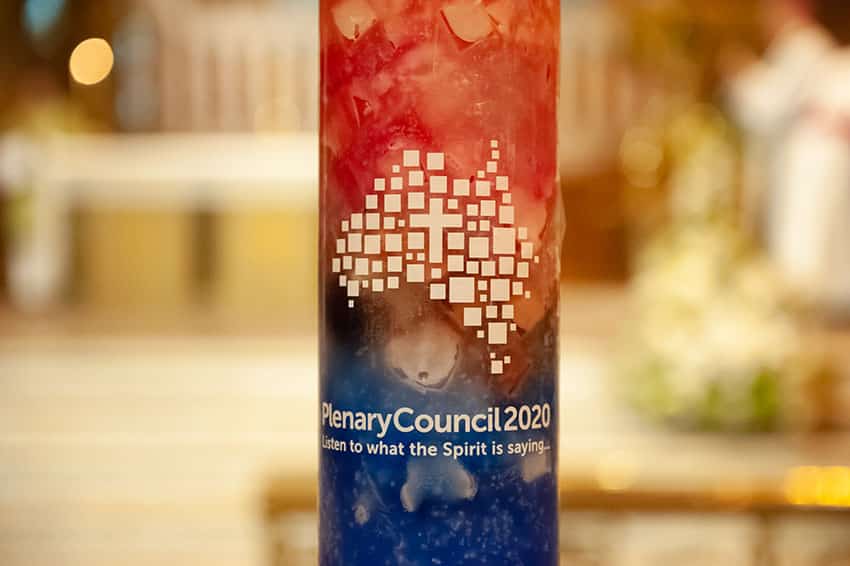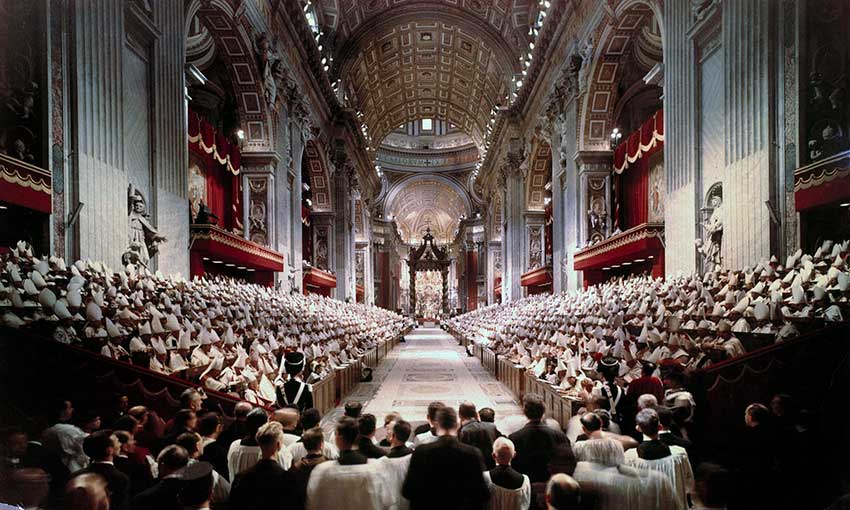
Members of the Plenary Council must “tailor our expectations” in anticipation of “the inevitable disappointment and disillusionment” that will follow the Second Assembly in July, Fr David Ranson, the Secretary of the Plenary Council, has told the Australasian Catholic Coalition for Church Reform.
“Many thousands of people have posted their own aspirations, and their own hopes, to the mast of this Plenary,” Fr Ranson told participants of the ACCCR webinar “The Plenary and the People”.
“Our Plenary Council, cannot by its nature, rhythm and purpose address the breadth and depths of those expectations.
“So my fear really is around the inevitable disappointment and disillusionment that might occur.
Responding to this disappointment will be a “critical” task for the post-Plenary Church, he said.
“… the Plenary agenda posed a ‘question and challenge’ insofar as ‘we said at the beginning that everything can be on the table’. Well, clearly, there is a lot that can’t be on the table.”
Fr Ranson, also Vicar-General of the Diocese of Broken Bay, said the Plenary Council has faced three “inherent difficulties” during its time, singling out in particular “ambiguity as to whether we are engaged in a synod or a plenary”.
It would have been better to hold a more open-ended national Synod, and to follow that with a Plenary Council “that reflected the outcome of the Synod and determined its practical, pastoral, legislative outcomes for the regional Church – which is why one holds a Plenary”.
He also said the Plenary agenda posed a “question and challenge” insofar as “we said at the beginning that everything can be on the table”.
“Well, clearly, there is a lot that can’t be on the table,” Fr Ranson said.
The Plenary Council may have benefited from beginning with an agenda, rather than a “blank page”, he added.

“We’ve sought to form an agenda out of a national listening exercise rather than begin with an agenda that enters into a national exercise of listening.”
The COVID-19 pandemic, climate change and the war in Ukraine have also left people fragile, vulnerable, tired and disengaged with the Plenary process.
Fr Ranson said he hoped that the Plenary Council may yet surprise the Church, even though it would likely result in “something quite limited”.
He encouraged participants of the ACCCR webinar to “tailor our expectations”, in part by thinking of the Plenary as part of a “wider impetus that is afoot”.
Members need to look for local ways to “implement synodality” and avoid “beating our heads up against a brick wall”, Fr Ranson said.
“The ACCCR has been the most consistent voice calling for the Plenary Council to be a vehicle for wide-ranging church reform.”
He also told ACCCR participants to form or join intentional communities or new ecclesial movements if their local parishes were not serving their needs.
“If we keep our eyes purely on the community that bears his name yes, we will be very disappointed at times, overwhelmed at times by its fragility, its sinfulness, its inadequacies,” he said.
The ACCCR has been the most consistent voice calling for the Plenary Council to be a vehicle for wide-ranging church reform.
While Fr Ranson’s remarks were received well by the ACCCR organisers and speakers, who called them “realistic”, several participants posted their frustrations in the online chat thread.
Participant “Dr Peter Schneider” wrote “’Taylor [sic] our expectations?’ … really David? We will go nowhere if we don’t raise our expectations.”

“Justin Stanwix” disagreed that the Plenary was a guaranteed disappointment: “But we have waited 4 YEARS. NOT just a beginning.
“Only half has occurred. Will we not allow the Writing Groups to suggest and allow the Spirit to have its influence on the next Assembly[?]”
Others were more accepting, with “Mary O’Shannassy” thanking Fr Ranson “for your very grounded and real contribution”.
Emeritus Professor John Warhurst, one of the leading voices in the reforming party of the Plenary Council, gave thanks to Fr Ranson and made some closing remarks.
“In these grand occasions we need to push the boundaries as hard as we can,” he said.
“Feedback from members on the Plenary Council’s working drafts was due on 4 February, and the propositions will now be finalised by the drafting committee.”
“Push the envelope if you like, within the structures we’ve been given.”
Professor Warhurst said that lay people need to “keep the conversation going, be aware and to press the authorities that the whole process needs to be more transparent.”
He said more transparency would have helped members “as they got tired, and as they got depressed, and as they dealt with the challenges of daily life”.
Feedback from members on the Plenary Council’s working drafts was due on 4 February, and the propositions will now be finalised by the drafting committee.
Plenary facilitator Lana Turvey-Collins wrote in the latest edition of PlenaryPost that Second Assembly program and final version of the propositions on which members will vote, will be released in June.
Related Articles:
